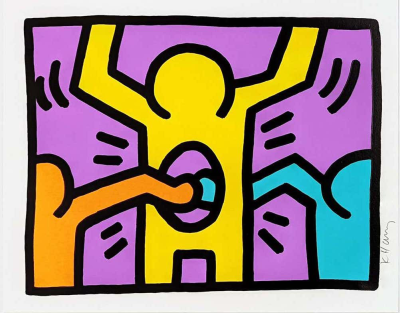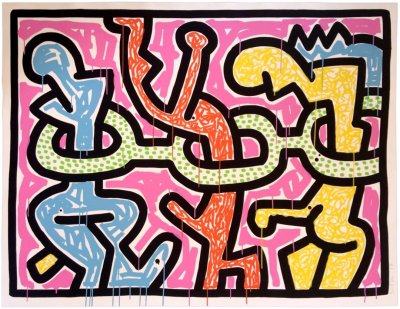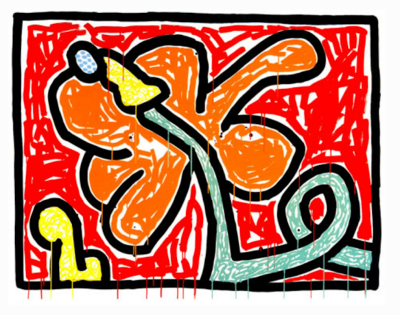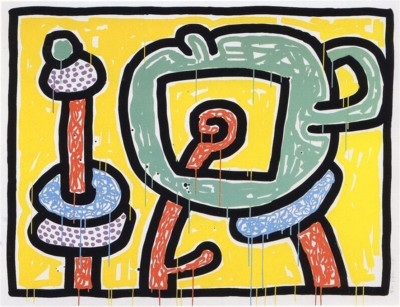About Keith Haring
American, 1958-1990
Keith Haring joined a long but sporadic lineage of 20th-century artists who brought elements of popular culture, "low art" and non-art elements into the formerly exclusive "high art" spaces of museums and galleries. He drew on the techniques and locales of street-based art such as graffiti and murals, employed bright and artificial colors, and kept imagery accessible in order to grab the eyes and minds of viewers and get them both to enjoy themselves and to engage with important concerns. Along with his artist contemporaries Jean-Michel Basquiat and Kenny Scharf, Haring opened the field of possibility for how seemingly simple and even cartoony elements by self-taught or less-schooled artists might be appreciated. Haring's deceptively simple imagery and text provided poignant and cutting cultural commentary on issues including AIDS, drug addiction, illicit love, and apartheid. As both an artist and an activist he established that depicting serious issues could be fun or at least lively when communicated through highly cartoony images and fresh and vivid choices of colors.
Haring's commitment to clean lines and simple images gave new life to figuration in painting, in contrast to the more abstract and conceptual approaches of the previous generation, and the more expressionistic gestural painting of his contemporaries. Haring provided proof of the possibilities of using public sites that were not usually dedicated to art to share artistic and political messages to multiple audiences. He lent street art credibility and legitimacy and took it into fine art galleries and museums, inspiring a new generation of street-to-gallery artists.





